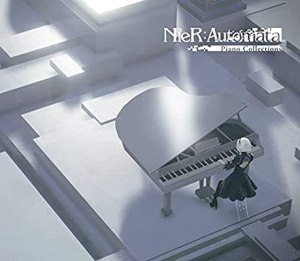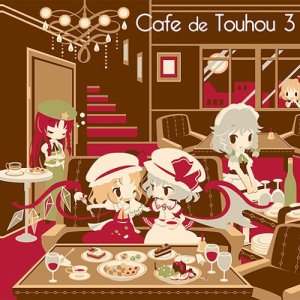Each morning, Kosuzu Motoori opens her parents’ bookstore for business and waits on their customers. Suzunaan carries all sorts of books for rent and sale, both natively written and from the mysterious world outside of Gensokyo, its human village, and the surrounding wilderness. Some of these books aren’t even written by humans, and a select few contain potentially dangerous magical powers. Not that Kosuzu minds — as a true book-lover with the special ability to translate any text no matter the language, she’s happy to get her hands on anything interesting, rare, or valuable. And if it contains some sort of arcane power, so much the better.
Kosuzu is at the center of Touhou Suzunaan ~ Forbidden Scrollery, a manga based on the Touhou Project game series as the title suggests.* Written by series creator and game designer/composer ZUN himself and illustrated by Moe Harukawa (since ZUN famously can’t draw all that well) Forbidden Scrollery was serialized in Comp Ace from 2012 to 2017, producing 53 chapters over its seven standalone volumes. Forbidden Scrollery is only one in a series of Touhou-based manga, but as far as I know, it’s the only one that’s gotten an official translation and release in physical form.
I don’t bring Touhou up as often as some series here, but it is one I’ve been a fan of for a long time and that I still follow a bit. It’s had amazing staying power over the years, starting in the 90s as an indie shmup game series on the PC-98 made by one guy drinking beer in a basement. 25 years later, Touhou has produced dozens of both official and fan games and thousands of other fan or doujin works. I’ve already obsessed over the music a few times, considered by many, including me, to be the biggest draw of the series given just how good a composer ZUN is.
By contrast, I used to not consider the writing one of the series’ strengths. Touhou features dozens, maybe now over one hundred, characters, almost all girls who have magical laser/bullet-shooting powers displayed in the games that are central to the series. But the games don’t have much in the way of story to them. Most of them just seem to focus on series main characters Reimu Hakurei the shrine maiden and Marisa Kirisame the witch, both magically powered laser-firing girls, fighting through a gauntlet of youkai or non-human spirit/nature sort of enemies, or vampires, moon people, gods, or whatever other supernatural types are threatening their home of Gensokyo and the humans who live there.

Vol. 2 featuring central character Reimu Hakurei, the youkai-exterminating shrine maiden, on its cover.
This is where ZUN’s manga come in, fleshing out the small world of Gensokyo and its inhabitants, both human and youkai. Forbidden Scrollery is the first official Touhou manga I’ve read (though not the first unofficial one, not if doujins count) and it contains a lot of what I think makes Touhou so enjoyable from a story and character perspective. While the games are naturally full of action and fighting and present stories more or less about magical conflicts, Forbidden Scrollery is mostly a more relaxed slice-of-life tale centered on Kosuzu’s life at Suzunaan and her interactions with her customers and friends, most notably Reimu and Marisa and several non-human visitors who disguise themselves as humans to rent out books, make conversation, and occasionally to try to get their newspaper stocked (and fans already know that means Aya will show up.)
Before getting any deeper into the substance of the manga, it’s important to at least outline the setting of the Touhou series, since it’s where Forbidden Scrollery takes place and is central to the story itself. Gensokyo (literally “Fantasy Land” or more poetically “Land of Illusions”) is a small section of rural Japan home to a population of both humans and youkai, a varied set of non-human natural spirits and beings, who in the 19th century waged a series of wars with each other for control. After the powerful youkai started breaking out into neighboring lands, their home was cordoned off into its own dimension in 1884 by a magical and extremely powerful barrier meant to keep said youkai in.
As another result of the border’s creation, the human population was now trapped in this small dimension with their youkai enemies. Yet they still have a hidden advantage: because the youkai are born from and powered by human fears, they need the humans to exist. Partly for that reason, youkai generally do not threaten the one human village in Gensokyo, and the various youkai factions (foxes, tanuki, tengu, kappa, etc.) hold each other in check, with the humans as the central element in this balance of power.
Another reason for the youkai reluctance to mess with the humans too much are two of the other central characters in this story and in Touhou overall. Reimu is the shrine maiden and only employee of one of the local Shinto shrines, one that barely sees any human visitors because of its remoteness from the village (and so she’s always hurting for offerings, a running joke in the series.) Her friend and sometimes rival Marisa is a much more carefree girl, a witch who lives in a nearby forest. Both also double as “youkai exterminators”, a job you actually carry out in a lot of the Touhou games.
“Exterminator” might sound like an extreme description, and it really is especially considering that far more often than not, neither of them actually “exterminate” their targets. Even in the games, winning a bullet hell fight with a powerful youkai character doesn’t see you killing them but merely roughing them up, after which they’ll often complain about the rough treatment and make a joke that may or may not translate into English very well. And very often, these characters return in later works, sometimes even showing up at Reimu’s shrine.

Official art by Moe Harukawa, a two-page spread from one of the volumes: Kosuzu tends her shop with Reimu and Marisa as guests.
This was one of my favorite aspects of Forbidden Scrollery. Though the story as a whole is still very slice-of-life/comedy, there is an underlying tension throughout having to do with this delicate balance between the human and youkai populations. This might be a little offputting for some readers at first, since most fantasy stories like this, both in manga/anime and in western works I’ve seen, involve a mix of fantasy races that are more or less treated as equals even if they’re at odds with each other.
By contrast, the humans of Gensokyo fear the far more powerful magic-using youkai for good reason — humans can easily be kidnapped or even eaten if they stray too far from the village unless they have their own magical abilities like Reimu and Marisa do (hence why they can survive outside the relative safety of the village.) At the same time, youkai who step out of line might be hunted down and punished or even eliminated, sometimes even by other youkai upset at this breach of protocol and the chaos it might cause.

The powerful disguised tanuki Mamizou Futatsuiwa drinking with a misbehaving newly formed youkai in the human village, about to teach him a rough lesson in youkai-human relations and etiquette.
As the story of Forbidden Scrollery develops, then, it becomes clear that the human-youkai relationship is a lot more complicated than simply “humans and youkai are enemies.” Reimu can come off as a real hardliner against the youkai, and when she learns that Kosuzu collects and obsesses over “youma books”, or books containing magical elements and often written by youkai themselves, she decides to keep a close watch on Suzunaan both for Kosuzu’s sake and for the village’s in general. Her hard line turns out to be more of a practical caution, however — as longtime fans know, Reimu spends a lot of time around youkai and is even on sort of friendly terms with some of them, but she does so partly to keep watch and because she knows how to handle herself. The same goes for Marisa.
Kosuzu, on the other hand, is still unaware of a lot of the dangers surrounding the knowledge she seeks out, and when youkai like Mamizou and Aya are attracted to her bookstore and start building rapport with her, she doesn’t understand quite what she’s getting into. Kosuzu is a great protagonist for the story Forbidden Scrollery tells because she’s such a novice in this way despite her intelligence and curiosity. A lot of this story has to do with her growth into a wiser person.
But the same is true for Reimu. Anyone who thinks Reimu is just a plain old anime girl main character should read this (or probably some of ZUN’s other manga, which I haven’t read yet myself) because there’s plenty both interesting and entertaining about her, not least of which is how she’s really kind of an asshole sometimes. But the kind you like. At least I like her.

Reimu complains to Kosuzu about rival shrine maiden Sanae Kochiya and her underhanded donation-seeking tactics (that Reimu also uses.)
It’s also nice to see so much Marisa in here, though since she’s practically a co-main character with Reimu that’s to be expected. Again, she might come off as a pretty typical “cute witch” sort of character you find in some manga and anime, but her tomboyish style and seemingly (but not actually) reckless approach to danger sets her apart. Together with the few new characters introduced in the manga and a whole load of recurring ones (the human historian Hieda no Akyu, tengu writer Aya Shameimaru, kappa inventor/engineer Nitori Kawashiro, and Reimu’s other other rival, the Buddhist nun/priest Hijiri Byakuren, and this is just a short list) there’s an excellent mix of characters to enjoy in this series. My only real complaint with this cast is that my favorites Patchouli and Alice don’t make an appearance, but then I guess they probably figure much more prominently into one or more of ZUN’s other manga.
But I don’t have any real complaints about Forbidden Scrollery. It was an enjoyable read with some nice art, a fine escape into another world (quite literally, since Gensokyo technically exists as a separate sort of pocket dimension in our own world in the Touhou universe.) I might even check out some other Touhou manga, though it may have to be less officially translated since I don’t think any of ZUN’s other manga works have been licensed. And to those readers who don’t know a damn thing about Touhou: I’d recommend picking this series up too. It works as a pretty decent introduction to the series and its world, especially if you don’t feel like jumping into the real deep end with Mountain of Faith or one of the other hellishly difficult bullet hell games that Touhou was built on. Though of course I recommend those too if you have the nerves for them.
* I can’t go without endnotes anymore, so here’s one about the title. Every official Touhou work as far as I’ve seen, whether it’s a game or manga, has a title formatted partly in Japanese, always Touhou [something], then the other part in English. This manga is sold in the West with the partial English title Forbidden Scrollery, which doesn’t make it all that easy to actually associate with Touhou unless you’re already familiar with ZUN as the author or the characters on the cover of each volume.
The Touhou part of the title rarely if ever seems to be translated anyway — if you’re interested, Touhou means “eastern” and Suzunaan translates into “Bell Hermitage”, though that’s really just the name of the bookstore in the manga and would probably cause some confusion if it were actually translated and put on the cover.






















